Restorative options are the tools I have longed for in the past. This industry-exclusive software allows seamless integration of restorative aspects with tooth alignment movements. In my daily practice, I am wholly devoted to cosmetic and oral restoration through a minimally invasive approach. Consequently, you can imagine the significance of this magic button from a technical perspective. While Align terms it “restorative”, I view it as integration. Now, we have the means to create a restorative prosthetic framework that optimises tooth alignment, aligning with my techniques, whether direct or indirect. If I can easily identify where to apply the restorative volume, decisions related to tooth alignment become straightforward. This approach emphasises preserving as much tissue as possible, ultimately resulting in superior aesthetics and adhesion, and long-term success, thanks to the conservation of enamel.
In my opinion, the most invaluable feature is the tooth mass analysis tool. This new tool aids me in two distinct ways. Firstly, from a technical aspect, it allows me to ascertain how much tissue I will need to remove from the patient’s teeth, empowering me to make informed decisions. Each click in the 3D control tools within ClinCheck equates to movement in millimetres or degrees. Now, I can assign a value to each click, as I can measure its impact from a restorative perspective. Each click is now significant, as it forms the restorative framework, allowing us to fully optimise our results. We have all the information at our disposal, eliminating the need for speculation. We possess the perfect tools for planning and precise measurement for preservation. It is incumbent on us to employ these resources to patients’ benefit, considering their comprehensive well-being. Secondly, this tool serves as a means of communication with the central figure in this narrative—the patient. Now, it is straightforward to elucidate why we, drawing on our dental expertise, made specific treatment decisions. The patient can now visualise why we have chosen to move a particular tooth in a certain direction, with the added benefit of measurement or explanation in familiar terms—colours.
Frankly, for me, Invisalign Smile Architect is a dream realised. I consider myself an early adopter of digital technology in dentistry, having worked in a fully digital capacity for nine years. This signifies my journey of learning, adapting to various workflows, investing in diverse hardware and mastering numerous software programs. While the path was enjoyable, it was challenging, given that everything was novel, and we lacked the seamless integration that we now possess. I have been a university lecturer for 12 years and often express to my students how fortunate they are. They embark on their careers with exceptional software, intra-oral scanners and optimised protocols. They possess incredible potential because they commence their professional journeys with the best tools at their disposal. They can achieve a remarkable level of dentistry because they are equipped with all the necessary information. Invisalign Smile Architect makes the digital patient tangible, providing all the information we need from a prosthodontic perspective on one platform, accessible on our computers. By operating in Align’s environment, we experience seamless integration with exocad, the premier software for CAD/CAM dentistry. The next step is an exciting prospect.
Acknowledgement
Special thanks to Dr Haitham el-Bahrawy, clinical executive of the Aligner Dental Academy, for his contribution, and Dr Fernando García-Sala for his incredible skills and collaboration with surgeries.



 Austria / Österreich
Austria / Österreich
 Bosnia and Herzegovina / Босна и Херцеговина
Bosnia and Herzegovina / Босна и Херцеговина
 Bulgaria / България
Bulgaria / България
 Croatia / Hrvatska
Croatia / Hrvatska
 Czech Republic & Slovakia / Česká republika & Slovensko
Czech Republic & Slovakia / Česká republika & Slovensko
 France / France
France / France
 Germany / Deutschland
Germany / Deutschland
 Greece / ΕΛΛΑΔΑ
Greece / ΕΛΛΑΔΑ
 Italy / Italia
Italy / Italia
 Netherlands / Nederland
Netherlands / Nederland
 Nordic / Nordic
Nordic / Nordic
 Poland / Polska
Poland / Polska
 Portugal / Portugal
Portugal / Portugal
 Romania & Moldova / România & Moldova
Romania & Moldova / România & Moldova
 Slovenia / Slovenija
Slovenia / Slovenija
 Serbia & Montenegro / Србија и Црна Гора
Serbia & Montenegro / Србија и Црна Гора
 Spain / España
Spain / España
 Switzerland / Schweiz
Switzerland / Schweiz
 Turkey / Türkiye
Turkey / Türkiye
 UK & Ireland / UK & Ireland
UK & Ireland / UK & Ireland
 International / International
International / International
 Brazil / Brasil
Brazil / Brasil
 Canada / Canada
Canada / Canada
 Latin America / Latinoamérica
Latin America / Latinoamérica
 USA / USA
USA / USA
 China / 中国
China / 中国
 India / भारत गणराज्य
India / भारत गणराज्य
 Japan / 日本
Japan / 日本
 Pakistan / Pākistān
Pakistan / Pākistān
 Vietnam / Việt Nam
Vietnam / Việt Nam
 ASEAN / ASEAN
ASEAN / ASEAN
 Israel / מְדִינַת יִשְׂרָאֵל
Israel / מְדִינַת יִשְׂרָאֵל
 Algeria, Morocco & Tunisia / الجزائر والمغرب وتونس
Algeria, Morocco & Tunisia / الجزائر والمغرب وتونس
 Middle East / Middle East
Middle East / Middle East
:sharpen(level=0):output(format=jpeg)/up/dt/2024/04/Shutterstock_1017664873.jpg)
:sharpen(level=0):output(format=jpeg)/up/dt/2024/04/Clearcorrect-launches-new-digital-solutions-globally.jpg)
:sharpen(level=0):output(format=jpeg)/up/dt/2024/04/IDEM-Singapore-2024_5_Invisalign.jpg)
:sharpen(level=0):output(format=jpeg)/up/dt/2024/04/New-Align-Technology-Campus-to-elevate-the-standard-of-care-in-dentistry-1.jpg)
:sharpen(level=0):output(format=jpeg)/up/dt/2024/04/How-far-has-3D-printing-brought-clear-aligners.jpg)
:sharpen(level=0):output(format=jpeg)/up/dt/2024/02/Fig.-10.jpg)
:sharpen(level=0):output(format=jpeg)/up/dt/2024/02/Dr-Ilzarbe-Ripoll-Luis-300x300.jpg)
:sharpen(level=0):output(format=jpeg)/up/dt/2024/02/Revolutionising-dental-treatments-The-power-of-digital-integration-with-Invisalign-Smile-Architect_Fig.-1-2.jpeg)
:sharpen(level=0):output(format=jpeg)/up/dt/2024/02/Revolutionising-dental-treatments-The-power-of-digital-integration-with-Invisalign-Smile-Architect_Fig.-2-2.jpeg)
:sharpen(level=0):output(format=jpeg)/up/dt/2024/02/Revolutionising-dental-treatments-The-power-of-digital-integration-with-Invisalign-Smile-Architect_Fig.-3-2.jpeg)
:sharpen(level=0):output(format=jpeg)/up/dt/2024/02/Revolutionising-dental-treatments-The-power-of-digital-integration-with-Invisalign-Smile-Architect_Fig.-4.jpeg)
:sharpen(level=0):output(format=jpeg)/up/dt/2024/02/Revolutionising-dental-treatments-The-power-of-digital-integration-with-Invisalign-Smile-Architect_Fig.-5.jpeg)
:sharpen(level=0):output(format=jpeg)/up/dt/2024/02/Revolutionising-dental-treatments-The-power-of-digital-integration-with-Invisalign-Smile-Architect__Fig.-6.jpeg)
:sharpen(level=0):output(format=jpeg)/up/dt/2024/02/Revolutionising-dental-treatments-The-power-of-digital-integration-with-Invisalign-Smile-Architect_Fig.-7.jpeg)
:sharpen(level=0):output(format=jpeg)/up/dt/2024/02/Revolutionising-dental-treatments-The-power-of-digital-integration-with-Invisalign-Smile-Architect_Fig.-8.jpeg)
:sharpen(level=0):output(format=jpeg)/up/dt/2024/02/Revolutionising-dental-treatments-The-power-of-digital-integration-with-Invisalign-Smile-Architect_Fig.-9.jpeg)
:sharpen(level=0):output(format=jpeg)/up/dt/2024/02/Revolutionising-dental-treatments-The-power-of-digital-integration-with-Invisalign-Smile-Architect_Fig.-10.jpeg)
:sharpen(level=0):output(format=jpeg)/up/dt/2024/02/Revolutionising-dental-treatments-The-power-of-digital-integration-with-Invisalign-Smile-Architect_Fig.-11.jpeg)
:sharpen(level=0):output(format=jpeg)/up/dt/2024/02/Revolutionising-dental-treatments-The-power-of-digital-integration-with-Invisalign-Smile-Architect_Fig.-12.jpg)
:sharpen(level=0):output(format=jpeg)/up/dt/2024/02/Revolutionising-dental-treatments-The-power-of-digital-integration-with-Invisalign-Smile-Architect__Fig.-13.jpg)
:sharpen(level=0):output(format=jpeg)/up/dt/2024/02/Revolutionising-dental-treatments-The-power-of-digital-integration-with-Invisalign-Smile-Architect_Fig.-14.jpeg)
:sharpen(level=0):output(format=jpeg)/up/dt/2024/02/Revolutionising-dental-treatments-The-power-of-digital-integration-with-Invisalign-Smile-Architect_Fig.-15.jpeg)
:sharpen(level=0):output(format=jpeg)/up/dt/2024/02/Revolutionising-dental-treatments-The-power-of-digital-integration-with-Invisalign-Smile-Architect_Fig.-16.jpg)
:sharpen(level=0):output(format=jpeg)/up/dt/2024/02/Revolutionising-dental-treatments-The-power-of-digital-integration-with-Invisalign-Smile-Architect_Fig.-17.jpg)
:sharpen(level=0):output(format=jpeg)/up/dt/2024/02/Revolutionising-dental-treatments-The-power-of-digital-integration-with-Invisalign-Smile-Architect_Fig.-18.jpg)
:sharpen(level=0):output(format=jpeg)/up/dt/2024/02/Revolutionising-dental-treatments-The-power-of-digital-integration-with-Invisalign-Smile-Architect_Fig.-19.jpeg)
:sharpen(level=0):output(format=jpeg)/up/dt/2024/02/Revolutionising-dental-treatments-The-power-of-digital-integration-with-Invisalign-Smile-Architect_Fig.-20.jpg)
:sharpen(level=0):output(format=jpeg)/up/dt/2024/02/Revolutionising-dental-treatments-The-power-of-digital-integration-with-Invisalign-Smile-Architect_Fig.-21.jpeg)
:sharpen(level=0):output(format=jpeg)/up/dt/2024/02/Revolutionising-dental-treatments-The-power-of-digital-integration-with-Invisalign-Smile-Architect_Fig.-22.jpg)
:sharpen(level=0):output(format=jpeg)/up/dt/2024/02/Revolutionising-dental-treatments-The-power-of-digital-integration-with-Invisalign-Smile-Architect_Fig.-23.jpg)
:sharpen(level=0):output(format=jpeg)/up/dt/2024/02/Revolutionising-dental-treatments-The-power-of-digital-integration-with-Invisalign-Smile-Architect_Fig.-24.jpeg)
:sharpen(level=0):output(format=jpeg)/up/dt/2024/02/Revolutionising-dental-treatments-The-power-of-digital-integration-with-Invisalign-Smile-Architect_Fig.-25.jpg)
:sharpen(level=0):output(format=jpeg)/up/dt/2024/02/Revolutionising-dental-treatments-The-power-of-digital-integration-with-Invisalign-Smile-Architect_Fig.-26.jpeg)
:sharpen(level=0):output(format=jpeg)/up/dt/2024/02/Revolutionising-dental-treatments-The-power-of-digital-integration-with-Invisalign-Smile-Architect_Fig.-27.jpeg)
:sharpen(level=0):output(format=jpeg)/up/dt/2023/12/Align-Technology-opens-2024-annual-research-programme-to-advance-orthodontic-care.jpg)








:sharpen(level=0):output(format=png)/up/dt/2023/06/Align_logo.png)
:sharpen(level=0):output(format=jpeg)/up/dt/2024/04/IDEM-Singapore-2024_5_Invisalign.jpg)
:sharpen(level=0):output(format=jpeg)/up/dt/2024/04/New-Align-Technology-Campus-to-elevate-the-standard-of-care-in-dentistry-1.jpg)
:sharpen(level=0):output(format=jpeg)/up/dt/2024/01/3D-printing-acquisition-may-help-Align-Technology-to-break-the-mould.jpg)
To post a reply please login or register